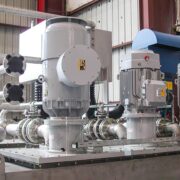Next-generation sequencing is a powerful and sensitive DNA analysis technique that has revolutionized the way we study biology. The technique allows us to sequence much larger portions of DNA than ever before, as well as read off small fragments of DNA that would have been impossible to detect with older methods such as PCR or Sanger sequencing.
Table of Contents
1. Next-generation sequencers can sequence an entire human genome in 1 day.
One of the largest advances brought about by next-generation sequencing is the ability to rapidly analyze the entire DNA content of a cell -in this case, a single bacterial cell. The Ion Torrent Personal Genome Machine (PGM) has been one of the first next-generation sequencers to be marketed, and the machine is capable of sequencing an entire bacterial genome in just 1 day.
2. A single human cell has 3 billion base pairs.
Next-generation sequencing technology allows us to sequence DNA fragments as small as 30 base pairs in length, and while this resolution means we can only reliably sequence stretches of DNA that are less than 100,000 base pairs in length (so-called ‘short reads’), it also means we can sequence stretches of DNA much smaller than this. The human genome is an incredibly long string of 3 billion double-stranded base pairs -making up around 6 billion nucleotides in total- and next-generation sequencers are capable of sequencing this entire length in a day.
3. Over 300 human genomes have been sequenced using next-generation sequencing technology.
The first human genome sequence was completed back in 2003 by an international consortium, at a cost of over $2.7 billion and 13 years of work by hundreds of researchers. Nowadays, you can get your entire genome sequenced in just a few days for $1,000. According to the National Human Genome Research Institute (NHGRI), more than 300 whole human genomes have been sequenced using next-generation sequencing technologies since 2007.
4. Next-generation sequencers can sequence RNA too.
Whole-genome sequencing means we can sequence the entire genetic code of a cell -all 6 billion bases that make up the DNA in each cell. However, it’s also possible to sequence the RNA content of cells too, which gives us another layer of information about the biology encoded by these cells. This technique is especially powerful when combined with gene expression profiling, in which we measure how much RNA of a given gene is produced by a cell. By studying the patterns of RNA expression, we can study how cells will behave in different environments and uncover the genes that control their behavior.
5. Next-generation sequencers can sequence viruses too.
Next-generation sequencing allows us to sequence small fragments of DNA from viruses as well as bacteria and archaea. A next-generation sequencer can be used to sequence fragments as small as 20 base pairs in length, meaning we can read the genetic code contained within viruses much more accurately than ever before. By sequencing viral genomes and comparing them with known reference sequences from other viruses, we can discover new viruses that have not been seen before.
In conclusion, next-generation sequencing technologies are revolutionizing the way we study biology. The cost of genetic sequencing has dropped dramatically in recent years, meaning more researchers have access to these powerful machines than ever before. Biological research is being transformed by these technologies -long reads allow us to sequence entire genomes in just a day or two, while short reads give us much greater insight into the way DNA is edited and spliced.



















Comments